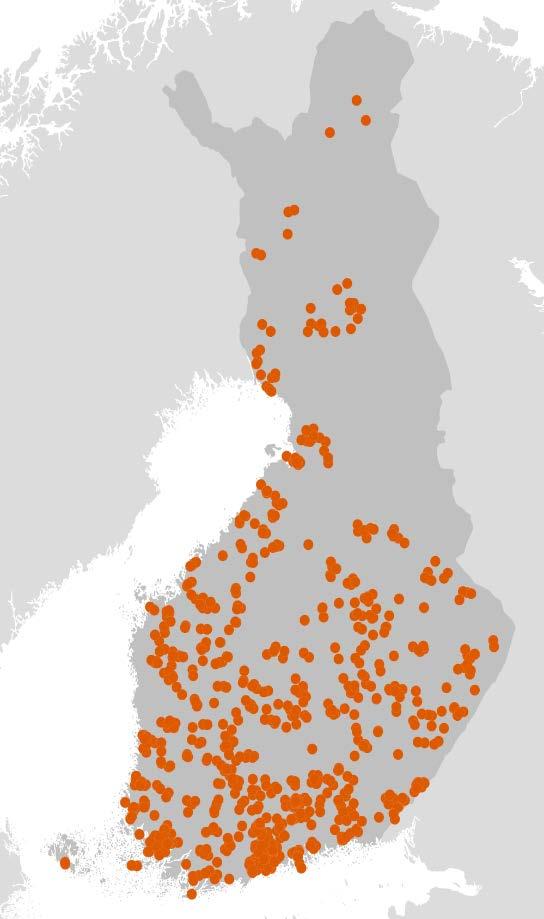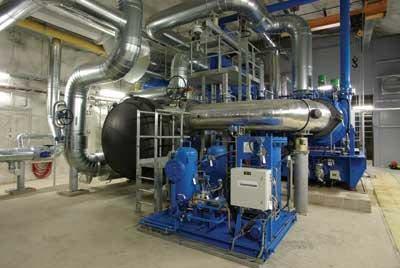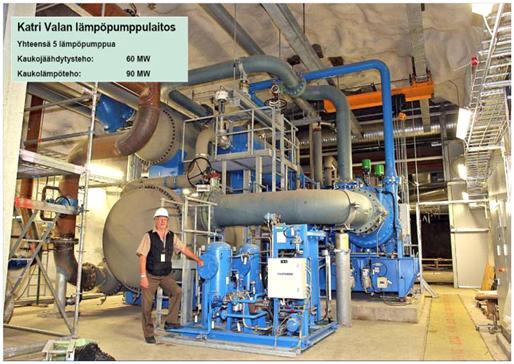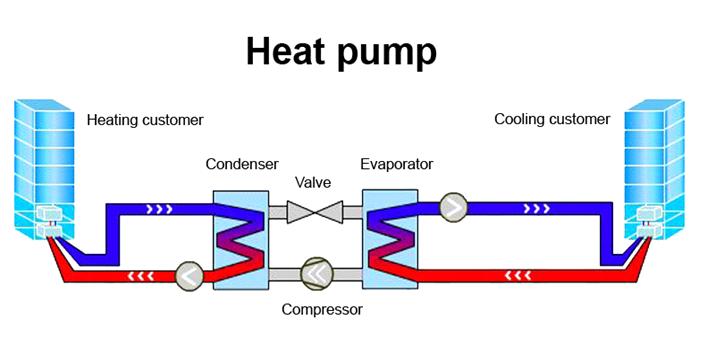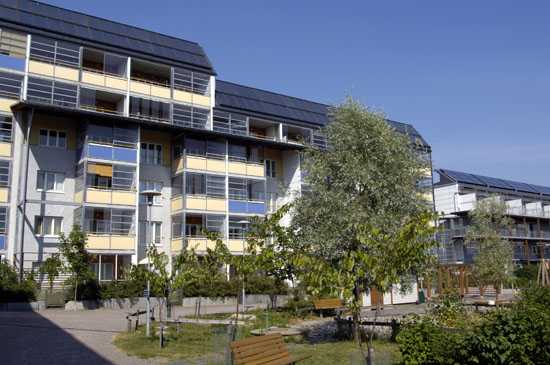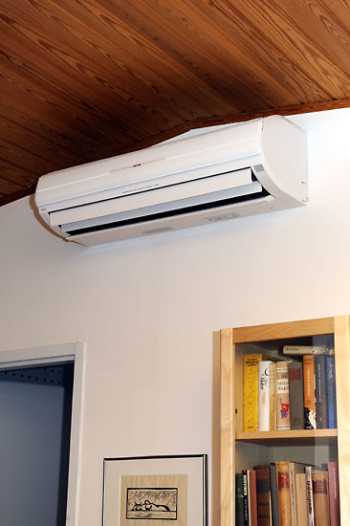Private houses for one family
Finnish private wooden house ─ an indispensable part of the landscape of Suomi. You have probably seen these neat brick-red and light yellow houses, standing on the sides of Finnish roads, decorating small islands in the Baltic Sea and almost completely filling the suburbs of Finnish cities. Moreover, residential buildings of this type are popular not only in the country of a thousand lakes, where they are the most common option for private housing. Today, houses built using Finnish technology can be found in other European countries, and even in Russia. Why are they so good?
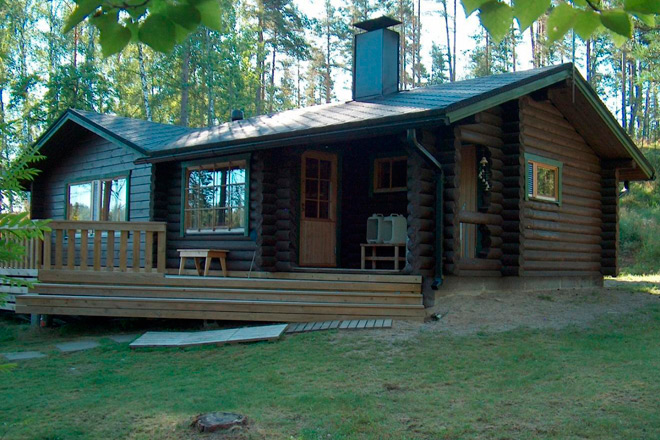
natural materials
Finnish private houses, like many years ago, are made only from natural materials. In the vast majority of cases, this is a pine beam. Moreover, only solid trees, whose age exceeds 70 years, are used for construction. The wood for construction is also processed in a very interesting way: on three sides, the log is hewn in the form of a parallelepipid, and on the fourth it remains round, and it is turned outward. The outer wall of the house is additionally upholstered with boards. This technology allows you to achieve excellent thermal insulation. In Finnish wooden houses, there are almost never cold hallways, if you look into such a house in winter, you will be warmly enveloped right outside the threshold.
small size
The area of a wooden Finnish house with an attic, a terrace and outbuildings rarely exceeds 100-120 meters. For comparison, in Russia, the size of a private house for permanent residence usually starts from 150 meters.

Low rise
Most often, a wooden Finnish house has one floor plus a small attic for storage. Often there are houses with 1.5 floors - an attic is built on the first floor, where bedrooms and children's rooms are usually arranged.
Lack of garages
Private Finnish houses do not have built-in garages. The car is either simply left next to the house, or a separate building is built for it.
layout
The layout of a Finnish house is simple. Entrance hall, spacious living room and kitchen and 2-3 small bedrooms. In addition, the house certainly has a pantry, a terrace and a sauna.
No metal
When building Finnish wooden houses, a minimum of metal parts is used. Wherever possible, Finnish builders try to use wood. The fact is that in the harsh Finnish climate with its sharp temperature changes, the metal breaks down very quickly.
Large firms
In Finland, such an important business as the construction of wooden houses is not carried out by private contractors, but by exceptionally well-established large companies. The most famous of them are Finnlamelli, Kontio and Honka.
transcript
2 REASONS FOR THE DEVELOPMENT OF THE SYSTEM OF BOILER PLANTS AND TPP IN FINLAND? Need for efficient use Shortage of finance for combustible fuels after WWII Solid fuels must be imported as they are not available in the country. Competition in the heating market has become the main driver. > High efficiency has become a necessity. Strong municipalities High council tax (20%) Public buildings are good customers Residential cooperatives are good customers, not apartment owners property (streets, parks) is also involved in the development of boiler plants > Participation of municipalities is crucial
3 WOULD YOU LIKE TO HAVE THE BEST HEATING SYSTEM IN THE WORLD? Minimal heat loss Minimal water changes Maximum reliability Efficient network Efficient production Three-quarters of the heat comes from thermal power plants High productivity Extensive use of renewable sources Low emissions Sustainable environment Financial sustainability Low heat tariffs High profits High share of thermal power plants No subsidies 3
4 Highly efficient and reliable district heating systems in Finland The heating system is available to the consumer 99.98% of the time per year (maintenance takes 2 hours per year, including scheduled maintenance) The probability of failure is 0.1 damage / km (compared to 1-2 damage/km in countries in transition) Prevention is part of maintenance, which minimizes the risk of failures Heating system efficiency (COP) is 91% (in some cities 94%) Water replenishment frequency 1 time per year 50 years (with the possibility of operation up to 100 years or more) 4
5 WOULD YOU LIKE TO HAVE A DISTRICT HEATING AND COOLING SYSTEM WITH EXCELLENT EFFICIENCY RATES? Key Performance Indicator Finland (200 companies on average) Countries in transition Heat losses 6-9% 15-40% Water level replenishment frequency / year Reliability 99.98% 99% or lower Share of CHP in the heat supply system 74% 30-60% Generation efficiency 93% 70-90% Share of renewable energy sources in production 40% 0-10% Personnel productivity (GW/person) Profitability of turnover, % 10-20% Low or negative 5





13 Construction of level substations Prefabricated compact substations, already tested in factories At least 2 heat exchangers per substation Hot water temperature 55 C Substation is operated all year round Substation belongs to the customer, but requires the approval of the network owner Picture above: installation in Heibei province, China Picture on the right: substation for private use (50 kw), Helsinki
14 Features of district heating Heat production Heat production Fuel Fuels in Heat distribution Heat distribution All customers are provided with level substations Consumption is calculated on the basis of meters, since 1950s. Heat production companies always operate on a commercial basis The lowest heat prices and the highest profit companies in Europe.



21 Why the Finnish district heating and cooling system? The coldest country in Europe provides the world's best district heating-cooling system and CHP! Finland's geographic position between east and west provides unique insight and decision making for different climate conditions. A network of experts provide one-stop service! Finnish companies offer innovative ideas and proven services. Many years of experience in the use of various energy sources allows us to promote also renewable energy sources Reliable solution providers. Finland is recommended as a reliable partner. Through clear planning, we are able to provide a certified end product that meets legal and consumer requirements. The system is Finland's unique know-how! District heating and cooling is a profitable business! 21
Law 2-E How houses are heated in Finland ThisisFINLAND
In northern European Finland, spending on heat supply is a visible part of the cost of any family. However, Finns do not agree to forget about the environment in their concern for economy. The sun, air and earth are good friends of the modern inhabitant of the Suomi country.
“Even a cold summer is warmer than a mild winter,” a Finnish proverb has long noted. And even in a mild winter, every house using Finnish technology - whether it's a skyscraper in a big city, a separate country house or a dacha on the lake - consumes many kilowatt-hours of energy.
The stove gives heat even now
Photovoltaic batteries make energy even in Finland. Photo: Niko Nurmi/Tekes
The owner of his house has the opportunity to significantly reduce their own costs. It is much more difficult for the inhabitants of skyscrapers: they are “hostages” of the central (in Finnish, more precisely: remote) heat supply. What and how the house is heated, they sometimes do not know, and it is difficult to influence this.Here are the lighting and multiple appliances for the home - they are in your hands: there is intense competition between manufacturers of electrical energy. You can go to a specialized site, compare prices and pick up a good one. Very reckless in pursuit of savings change power companies every year.
About a hundred years ago, only one way to heat your home was stoves of various designs, and even in our time, in fact, in any new cottage, a fireplace occupies its own main place. However, the fireplace now plays a secondary role: they alone cannot heat large houses.
Until quite recently, a boiler that was heated with fuel oil could be called the best friend of a Finn homeowner. Uncomfortable, wasteful and non-environmentally friendly, it is not yet forgiven: and at the moment 20% of the Finnish housing stock is heated in this way. But their houses are becoming rarer, and new ones never at all - paying extra cash and spoiling the external environment is absolutely not in Finnish customs. Now Finland is ruled by the law of 2 "E" - economy plus ecology.
Geothermal heating pump draws energy from the ground
Very often, a new house based on Finnish technology draws energy, like the mythological Antaeus from the earth. Because in Finnish conditions at a depth of 200 meters the temperature can reach +10 degrees. Finnish rocks are like huge heating devices: in the summer they accumulate heat, during the winter they give it away. Tubes are laid in the ground, through which 40% ethyl alcohol moves.
A special device is installed in the house: something like a refrigerator, on the contrary, with a computer mounted inside. Naturally, it costs a lot, but it is reimbursed for 5-7 years and makes it possible to save 30 percent of electrical energy and more. There is nothing surprising in this, that such enviable figures also tempt the owners of old-built houses, and they undertake to remodel their own houses.
Finns are warmed by the sun and air
Heating pump in a private apartment in Espoo, Finland. Photo: Sari Gustafsson/Lehtikuva
The Finns made even the surrounding air work for them - just imagine a refrigerator turned inside out, where the cool part is outside, and the heating system with a circulating specialized substance is indoors. With frost down to -25? it works great: having spent 1 kW of electrical energy on work, the heating pump will produce up to 2 and even 5 kW of heat.
Such a “warm” refrigerator, or rather, a climate device, is productive for small houses - no more than 120 meters of housing area. But for small houses this is a real find: no need to drill the ground and install expensive equipment: all costs are no more than 2000-3000 euros.
Text: Tatyana Derkach and Vladislav Bykov, October 2012
Presentation on Planora Oy 2003 Central heating in Finland. transcript
1
Planora Oy 2003 District heating in Finland

2
Planora Oy 2003 Central heating in Finland Central heating in Finland is the most widely used type of heating, with almost 50% share of the heat market 2.4 million Finns live in houses with central heating. Each region uses the most profitable for the region, local fuel. In areas with a developed gas supply system, gas is used as fuel, in the largest coastal cities coal and peat-rich areas use peat.

3
Planora Oy 2003 Central heating and the environment Central heating and electricity are part of public technology. They reduce local emissions into the environment and thus contribute to comfortable living. Central heating has its own environmental protection system. Many energy companies are already using such a system. Some enterprises have already certified activities that affect the environment
These measures guarantee continuous development in the field of environmental protection and taking into account the natural aspect in any activity of the company.The development of environmental protection is reflected in reports that are published in annual reports or separately
4
Planora Oy 2003 How it works From CHP to consumer Consumers receive heat from water circulating in the heating network. The coolant temperature varies depending on the weather within ºC. The temperature of the water returning from the consumer to the heating plant lies within ºC. In buildings, heat is used to heat rooms, produce hot water, and operate ventilation. Heat is received at CHP or boiler houses. Heat is delivered to the consumer using hot water circulating in the heating system.

5
Planora Oy 2003 Heat generation in Finland Heat is produced both in CHP together with electricity and in boiler houses producing only heat. District heating in Finland got its start from the simultaneous production of heat and electricity, following the model of the woodworking industry.

6
Planora Oy 2003 Fuels Central heating – Reliability and flexibility Heat is produced by burning the most suitable fuels in the area, such as natural gas, coal, peat, wood and sawmill residues or fuel oil, taking into account the overall economy and environmental impact. Heat production also benefits from the surplus energy of industrial enterprises.
7
Planora Oy 2003 Consumption In 2004, district heating customers used 29.5 TW of heat. The sale amounted to 1.14 billion euros. Residential stock used 53% of total consumption, industry 10% and other consumers 37%.

8
Planora Oy 2003 Heat index change

9
Planora Oy 2003 Cost of district heating In 2004, the average cost of district heating was 3.89 euro cents per kilowatt hour. Approximately 25% of the cost is taxes. Prices vary depending on the area. In large areas, heat is obtained more profitably at the same time as electricity. In addition to the fuel used, prices are also affected by the age of the heating plant, infrastructure development, investment capacity, as well as the maintenance of the enterprise and the owner's requirements for profitability.

10
Planora Oy 2003 Distribution Water is used as the heating medium The heating medium is not mixed with the consumer's flow water The heating pipeline is installed in the ground at a depth of 0.5 - 1 m. In winter conditions, the pressure in the pipeline "from the CHP" can reach 1.5 MPa (15 bar), and the pressure difference to ensure the operation of the consumer's heating equipment is maintained in normal mode at the level of 60 kPa (0.6 bar). The reliability of the central heating system is almost one hundred percent. The diameter of the pipeline ranges from 20 mm in buildings to 1000 mm at the outlet of the capital's thermal power plant The total length of heating networks in Finland is km, and increases by km annually

11
Planora Oy 2003 Energy metering Heat meters include a volume sensor, a temperature sensor and a heat calculator. The volume sensor measures the amount of water used, the temperature sensor measures the temperature of the incoming and outgoing water. The heat calculator reads the data received from the temperature sensor and the volume sensor. The calculator makes various corrections for changes in density with temperature. The heat used is shown in megawatt hours (MWh). 1 MWh = kWh (kilowatt hours) Calculation of the used energy is reliable and accurate.



